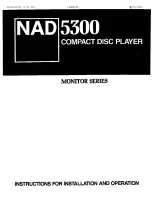
WALKMAN Help Guide | Notes on the touch screen
file:///F|/...20and%20Settings/editoralaya/Desktop/imx_20111124132952_GB_PC/4-408-194-11(1)/eng/contents/02/01/03/03.html[11/24/2011 4:09:33 PM]
Help Guide
NWZ-Z1040/Z1050/Z1060
|
How to Use
Notes on the touch screen
The following are notes regarding the touch screen and LCD screen.
Notes regarding the touch screen
Your “WALKMAN” uses a capacitive touch screen. Tap the screen directly with your
fingertip. Do not scratch it or tap it with sharp objects such as a needle, pen, or
fingernail. You cannot operate the touch screen with a stylus.
If you touch the touch screen with gloved fingers, it may operate incorrectly or may not
operate at all.
Do not operate your “WALKMAN” with objects on the touch screen.
If the touch screen is touched by objects other than your fingertip, it may not react
correctly.
Do not put the touch screen close to other electrical devices. Electrostatic discharges
can make the touch screen malfunction.
If there are water droplets on the touch screen, or if you touch it with wet fingertips, the
touch screen may not react correctly.
Do not put the touch screen close to water. The touch screen may malfunction in humid
conditions or when exposed to water.
Notes regarding the LCD screen
Do not press hard on the LCD screen. Doing so may cause unevenness or damage.
Do not leave the LCD screen in direct sunlight. Be sure to block direct sunlight when
using your “WALKMAN” near a window.
Using your “WALKMAN” in low temperature conditions may produce a residual image on
the LCD screen. This does not indicate a malfunction. The screen will return to normal
when your “WALKMAN” returns to normal temperature.
A residual image may appear on the LCD screen if the same image is displayed for an
extended period of time. The residual image will eventually disappear.
The LCD screen becomes warm during operation. This is normal and does not indicate
a malfunction.
The LCD screen is manufactured using high-precision technology. You may, however,
see tiny black points and/or bright points on the LCD screen. This is a normal result of
the manufacturing process and does not indicate a malfunction.
The LCD screen is made of glass. If the glass is damaged (cracked, etc.), do not touch
the touch screen nor try to repair it by yourself. Handle the LCD screen carefully as it is
vulnerable to dropping or mechanical shock. The warranty does not cover any damages
caused by customers due to incorrect handling.
Related topic
© 2012 Sony Corporation
Search
















































